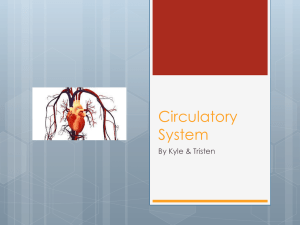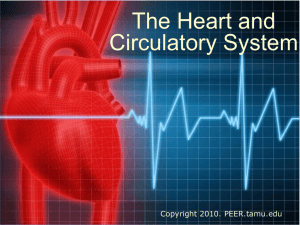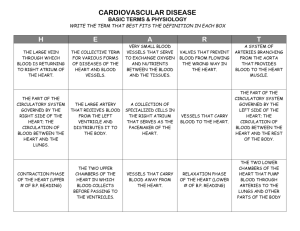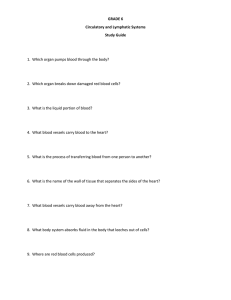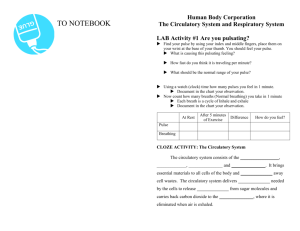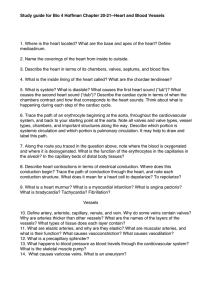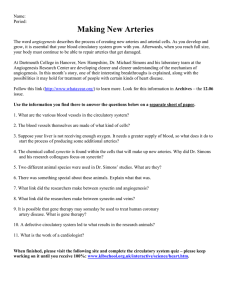The Circulatory System
advertisement
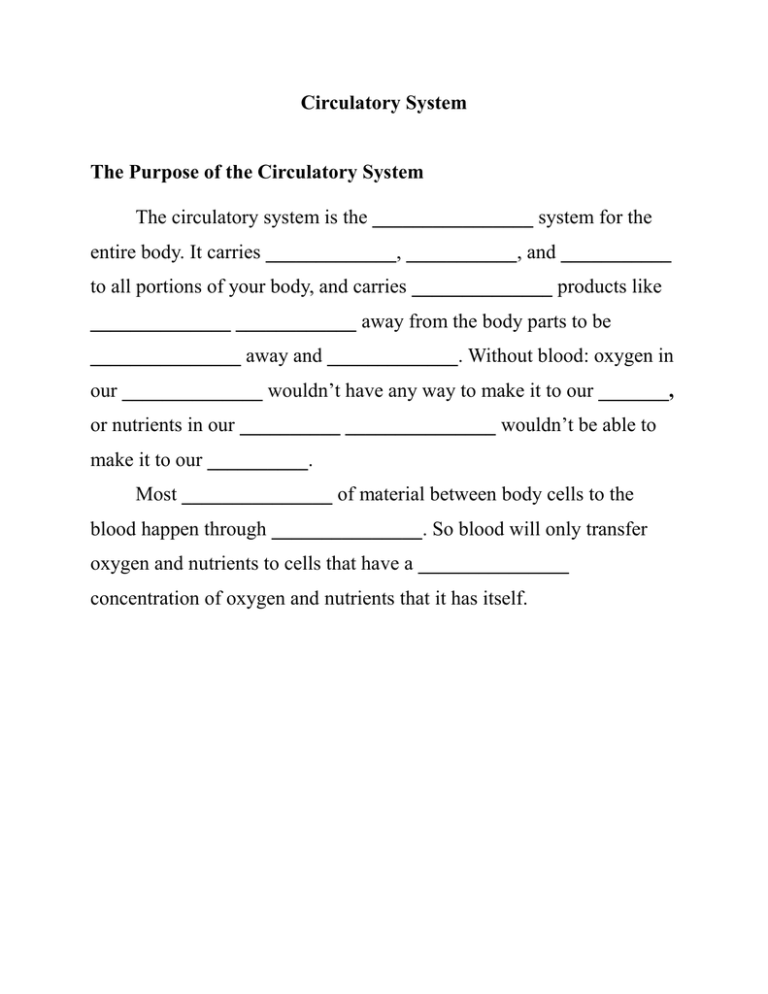
Circulatory System The Purpose of the Circulatory System The circulatory system is the ________________ system for the entire body. It carries _____________, ___________, and ___________ to all portions of your body, and carries ______________ products like ______________ ____________ away from the body parts to be _______________ away and _____________. Without blood: oxygen in our ______________ wouldn’t have any way to make it to our _______, or nutrients in our __________ _______________ wouldn’t be able to make it to our __________. Most _______________ of material between body cells to the blood happen through _______________. So blood will only transfer oxygen and nutrients to cells that have a _______________ concentration of oxygen and nutrients that it has itself. The Heart of the Matter The main hub and workstation of the circulatory system is the _________________. The heart has four main chambers. The chambers that allow blood to move _____________ the heart from the body are called the ______________. The chambers that move blood _________________ the heart and into the body are called ________________________. The left and right refer to the left and right side of __________________________ so this figure is mirrored from the one in your body. Between the chambers are ________________. Each valve allows blood to flow in only one direction. The heartbeat you can hear is the muscles of the heart squeezing, opening and closing these valves. Blood Vessels Blood vessels are the “___________” or “__________________” your blood takes to move through the body. There are three types of blood vessels in your body: __________________, ___________________________, and ________________. _____________________ are the vessels that carry blood from the heart and into the body. Most arteries carry __________________________, __________________________ (has lots of _________________) blood. The heart pumps the blood through the arteries, using pressure to keep it moving. Arteries have ____________, flexible walls to withstand the pressurized flow. The largest artery in your body is the _______________ and has a width of approximately a penny. It branches into smaller and smaller arteries until the smallest arteries, the _______________________, reach the capillaries. ___________________________ are a network of tiny blood vessels. It is here that blood diffuses oxygen, nutrients, and glucose (sugar) through the thin walls into other tissues that need it. This is also where blood will pick up carbon dioxide and other wastes. After leaving the capillaries, the blood no longer has oxygen or is called _____________________________ blood. The blood goes from the capillaries to the __________________ and then into the ____________. The veins carry the blood back to your heart. The blood is no longer under pressure, so the veins are thin walled. They also have valves to prevent blood from flowing backwards through the vein. Key Question: Which body systems are connected to the circulatory system? Where do they interact?
